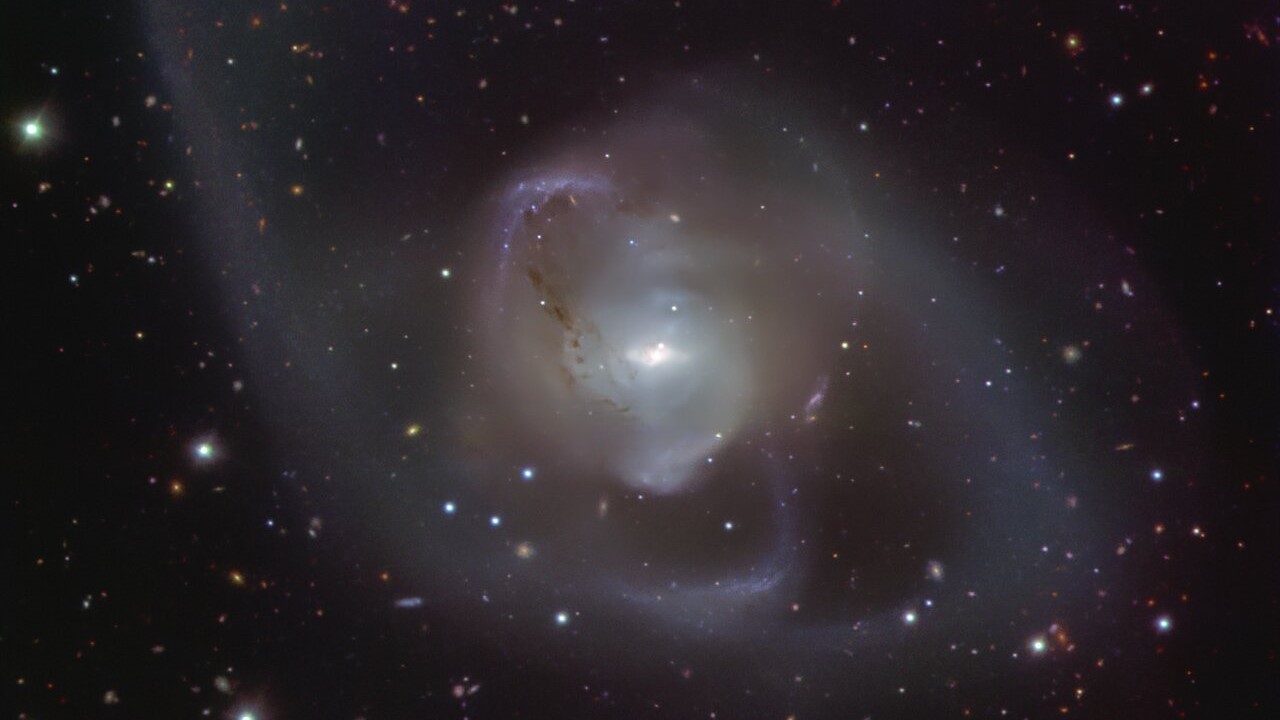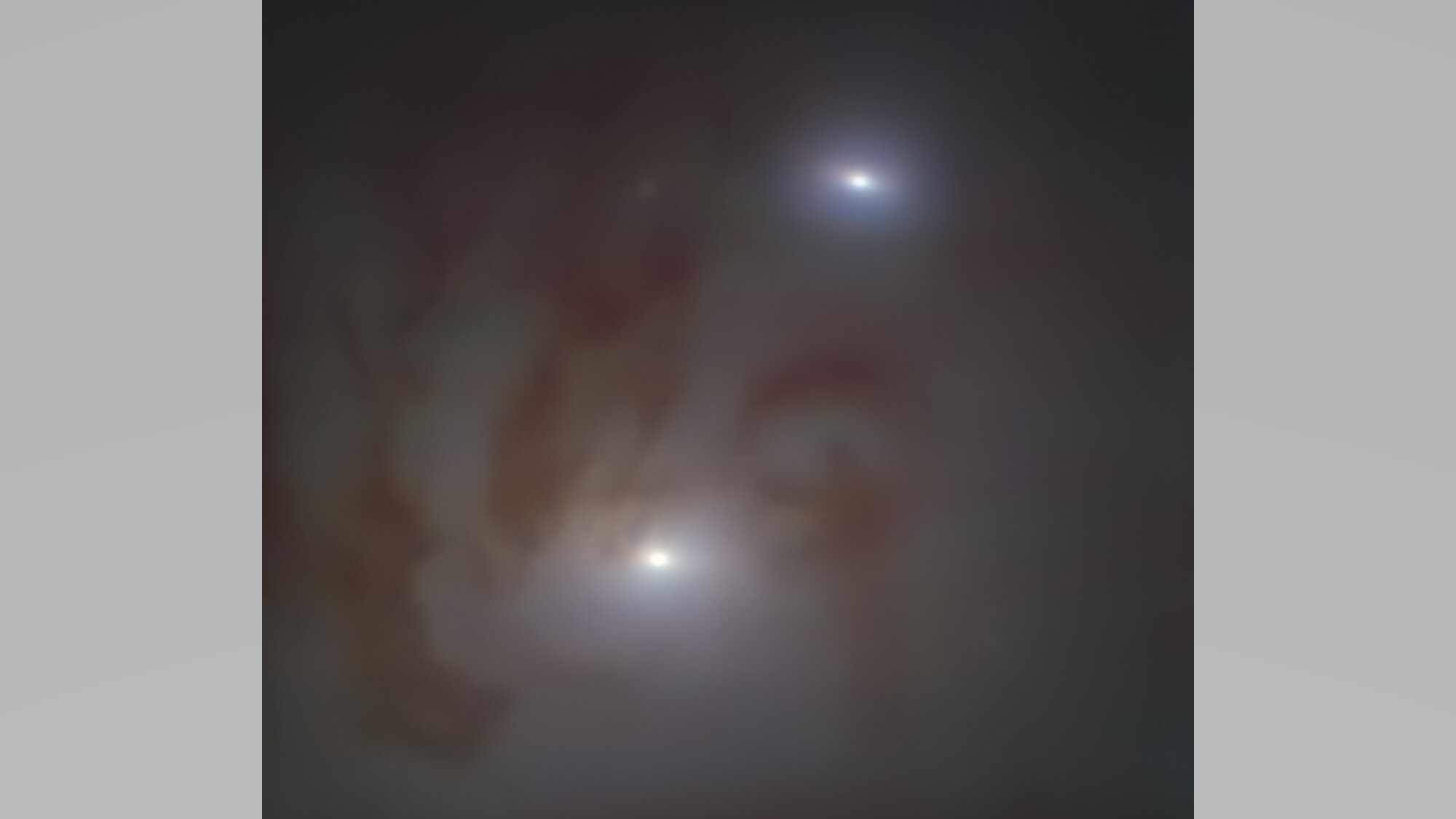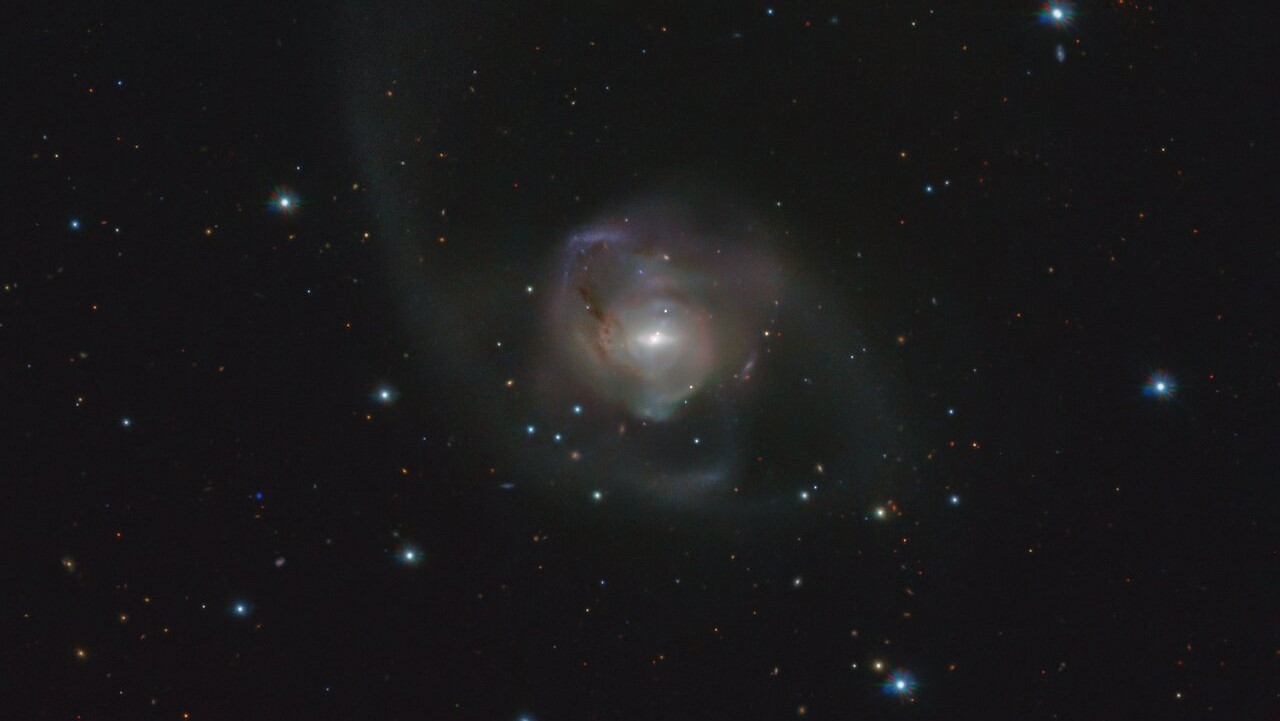Supermassive black hole pair nearest Earth is locked in a violent cosmic dance
Astronomers have discovered the pair of supermassive black holes at the heart of colliding galaxies that is closest to Earth.
Astronomers have photographed a violent cosmic dance that began between two galaxies a billion years ago, pulling them into a collision that birthed a new chaotic galaxy.
At the heart of that giant collision-born galaxy are two supermassive black holes — each once at the core of respective progenitor galaxies. The duo are the closest supermassive black hole pairing to Earth ever discovered. Eventually, in around 250 million years, these titanic cosmic monsters will also collide and merge like their parent galaxies, creating an even more massive supermassive black hole, according to a statement from the European Southern Observatory, which operates the telescope used in the research.
The galaxy created by this billion-year-long collision, called NGC 7727, is a tremendous and beautiful example of the long, drawn-out process that two galaxies undergo when they bump into each other.
Related: 'Cosmic butterfly' wings shimmer in image of violently colliding galaxies

Gravity creates tidal forces that drag out trails of dust, gas and stars from each galaxy, spinning these around the whirling collision. This process erases the shape of each galaxy, wiping their features clear. Although the galaxies and their black holes collide, there is enough distance between the stars that make up galaxies that the stars themselves are spared the destructive effects of the merger. (Stars appear as bright blue-purplish spots in the new image.)
Eventually, the collision process creates a new galaxy with a disordered and asymmetrical shape not resembling either of its predecessors.
The newly released image of NGC 7727, which is located about 89 million light-years from Earth, was captured using Focal Reducer and Low Dispersion Spectrograph 2 (FORS2) instrument, which is part of the Very Large Telescope (VLT) located in northern Chile.
Get the Space.com Newsletter
Breaking space news, the latest updates on rocket launches, skywatching events and more!

While this isn't the first image of this galactic merger, it shows NGC 7727 in intricate and unprecedented detail, including the faint trails of stripped galactic material that wrap around the galaxy's main body. These long arms of dust, gas and stars that ripped from each progenitor galaxy long ago surround the galaxy their merger has created, almost creating the illusion of a galactic embrace.
The two bright points visible at the center of NGC 7727 are further evidence of the galaxies' prior violent cosmic tussle. These are the merging galaxies' cores, each occupied by its own supermassive black hole, some of the last parts of the galaxy to coalesce.
These two supermassive black holes are currently separated by just 1,600 light-years and will merge in around 250 million years, a tiny amount of time in cosmic terms. The collision will leave behind a black hole even larger than either predecessor is today.

Although the system is the closest supermassive black hole pairing to Earth yet found, the search for such pairs is set to receive a massive boost later in the 2020s when the Extremely Large Telescope (ELT), also located in the Atacama Desert region of Chile, comes online.
The cosmic dance that created NGC 7727 could also give hints of what will happen in billions of years when our Milky Way galaxy runs into its close cosmic neighbor, the Andromeda galaxy, and the pair begin their own violent merger.
Follow us on Twitter @Spacedotcom and on Facebook.
Join our Space Forums to keep talking space on the latest missions, night sky and more! And if you have a news tip, correction or comment, let us know at: community@space.com.

Robert Lea is a science journalist in the U.K. whose articles have been published in Physics World, New Scientist, Astronomy Magazine, All About Space, Newsweek and ZME Science. He also writes about science communication for Elsevier and the European Journal of Physics. Rob holds a bachelor of science degree in physics and astronomy from the U.K.’s Open University. Follow him on Twitter @sciencef1rst.









